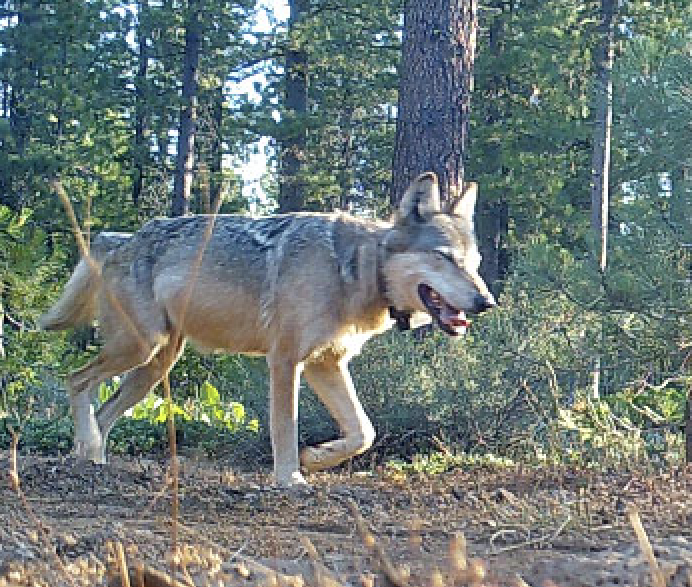
CALIFORNIA – The California Department of Fish and Wildlife (CDFW) announced on October 24, that it lethally removed four gray wolves (Canis lupus) from the Beyem Seyo pack following “an unprecedented level of livestock attacks across the Sierra Valley.”
The department said the action follows months of non-lethal efforts to reduce livestock losses and is based on the best available science and wolf biology.
The wolves killed 70 livestock between March 28 and Sept. 10, 2025. The pack was responsible for 63% of California’s 110 wolf-related livestock losses during this time.
From Sept. 10 to Oct. 14, 2025, 17 more confirmed or probable livestock losses occurred.
Despite extensive deterrence measures — including drones, non-lethal bean bags, ATVs, 24/7 field monitoring, diversionary feeding, and fladry, the wolves became habituated to cattle as a primary food source, threatening both livestock and the integrity of wolf recovery efforts.
CDFW continues to work with ranchers and federal partners to investigate depredations.
Gray wolves are protected as endangered
Gray wolves are protected as endangered under both the California and federal Endangered Species Acts. CDFW said it takes that protection seriously, allowing lethal removal only under strict conditions.
California law provides for conserving endangered species like the gray wolf, recognizing that regulated take may sometimes be necessary for conservation.
CDFW coordinated with USFWS to ensure the actions were necessary and compliant with federal law.
The affected wolves included a breeding pair (WHA08M and LAS23F) and two others, a female (BEY01F) and a male (BEY12M).
During the operation, a juvenile male (BEY12M) was mistakenly identified as the breeding male (WHA08M), which was similar in color and size, and was unintentionally killed.
Remains of two additional juveniles (BEY15M and BEY17M) were found and determined to have died before the operation began.
The cause of death is unknown; however, natural mortality among juvenile gray wolves is common.
CDFW staff continue operations to safely capture and relocate the remaining juveniles to wildlife facilities, ensuring their welfare and preventing learned behavior from spreading to other wolves in California.
Wolves’ habits can be passed to their offspring
Gray wolves naturally prey on wild ungulates such as deer and elk, not livestock.
These wolves had become habituated to preying on cattle, a behavior passed to their offspring that could spread as they formed new packs.
This shift undermines wolf recovery efforts in California and risks altering generational feeding patterns and broader ecological dynamics.
Habituation to livestock also draws wolves closer to human communities, increasing the risk of conflict despite their natural avoidance of people.
CDFW director Charlton H. Bonham said the decision was not made lightly nor was it easy.
“Wolves are here in California and that is an amazing ecological return. Yet, their reemergence is a significant, disruptive change for rural communities,’ he said.
Bonham added that the Beyem Seyo pack became so reliant on cattle at an unprecedented level that they could not break the cycle, which ultimately is not good for the long-term recovery of wolves or for people.
Summer Strike Team Program
This action follows months of work by CDFW’s Summer Strike Team, which concluded on Sept. 30.
The Summer Strike Team program, created to prevent livestock attacks in the heavily impacted Sierra Valley, deployed over 18,000 staff hours across 114 days and conducted 95 hazing events, preventing even greater cattle losses.
Eighteen Sierra Valley ranches enrolled in the program.
CDFW staff also helped ranches assess fladry use and ensure proper livestock carcass disposal to prevent attracting scavenging wolves.
The program also supported depredation investigations, helping ranchers access compensation through CDFW’s Wolf-Livestock Compensation Program.
Gray wolves returned to California in 2011
About a century ago, eradication efforts wiped gray wolves from California’s landscape. Gray wolves naturally returned to California from Oregon in 2011.
Most of California’s wolves live in the northeast, with one pack in the southern Sierra Nevada.
For more information about gray wolves in California and guidance on deterring them from ranching properties, visit CDFW’s Gray Wolf webpage.
RELATED: California law now allows taking of invasive mute swans

